On the evening of Aug. 28, 1859, a telegraph in New York took on a life of its own. As its operator, J. C. Crosson, fought to transmit messages, the current fluctuated wildly. The battery that powered the machine was supposed to supply a steady direct current. Now, it was as though something else had gotten into the wires, at one moment draining them of all charge and at the next, overwhelming the circuitry with electricity.
Bemused, Crosson threw open the doors to his office and saw a sky painted green and red. Streaks of light descended toward the horizon, lighting up the evening in ethereal shades.
Crosson’s was not the only telegraph upset by the strange electromagnetic disturbances. Operators in France found their transmissions likewise overwhelmed by interference. When they tried to disconnect the devices from their batteries, sparks leapt out. In Montreal, it took operators five hours to transmit a 400-word report to the Associated Press. Telegraph workers in Kentucky gave up completely until the strange lights faded.
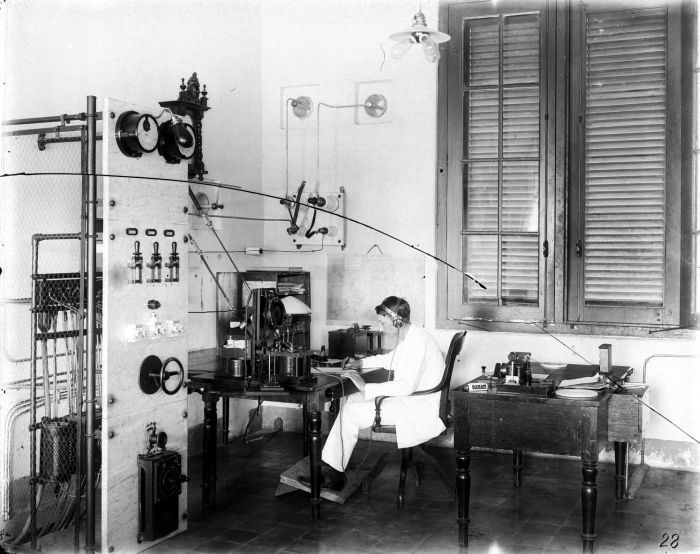
A telegraph operator in Indonesia, circa 1927. Photo: Collective Wereldmuseum (v/h Tropenmuseum), part of the National Museum of World Cultures, CC BY-SA 3.0
A night as bright as day
What Crosson saw was an aurora borealis unlike any recorded before or since. Great sheets of light like Greek fire blanketed the sky.
An observer from Vermont wrote an almost Biblical description of the view: “We were notified of a large fire behind the mountain at the north, and we went out to see it. Presently the red clouds began to disappear and spires of green shot up from the same place…The sky for about an hour more kept changing from green to red, till ten and a half o’clock, when all the brilliancy was gone, except a little green at the north.”
Hikers in the Rocky Mountains described light bright enough to read by. “Some of the party insisted that it was daylight and began the preparation of breakfast,” wrote one observer. “The light continued until morning, varying in intensity in different parts of the heavens, and slowly changing position.”
We know now that the aurora is caused by solar winds carrying energetic particles, which flow along the Earth’s magnetic field lines and hit oxygen atoms in the atmosphere. This transfers energy to the oxygen, but it eventually returns to its default, less-energetic state, and emits light as it does so. Depending on the energy gaps involved, we see different colors. Red comes from the highest layers of the atmosphere and green from beneath it. Occasionally nitrogen can take the place of oxygen, producing blue light in the lower parts of the atmosphere.
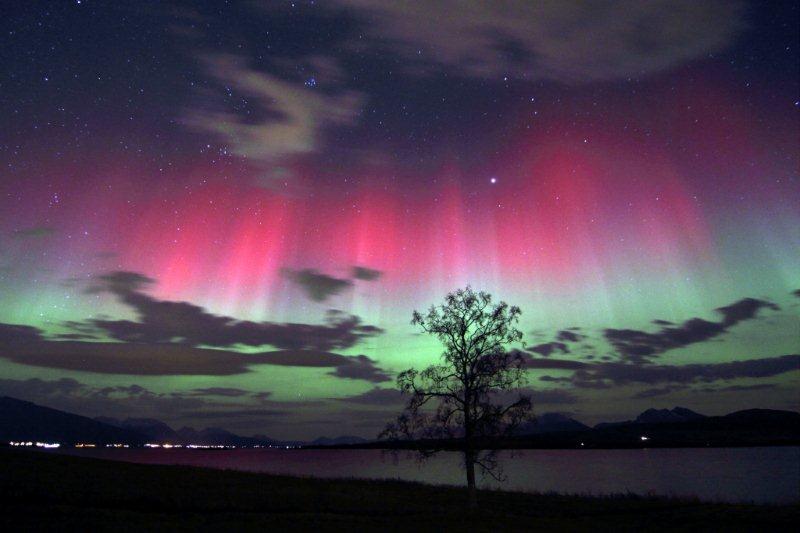
The aurora borealis in Norway. Photo: Frank Olsen
The aurora borealis is common in the Arctic and occasionally visible at lower latitudes in times of high solar activity. During the 1859 solar storm, it was visible in the tropics. A newspaper in Hawaii reported that the view in the Honolulu sky was almost as if they had been standing in the Arctic.
Astronomers to the rescue
Amid all this chaos, two amateur astronomers had their telescopes trained on an apparently innocent astronomical bystander: the Sun. Richard Carrington and Richard Hodgson were hunting sunspots. Sunspots are highly magnetic regions of cooler material in the light-emitting solar region known as the photosphere. Against the bright background of the Sun, they appear as freckle-like shadows.
During Carrington and Hodgson’s separate observations on Sept. 1, two bright lights flared into existence, moved across the Sun’s surface in about five minutes, and faded. Judging by the size of the sunspots behind them, they had covered upwards of 56,000 kilometers during the observation. That implied a speed of about 190,000 meters per second.
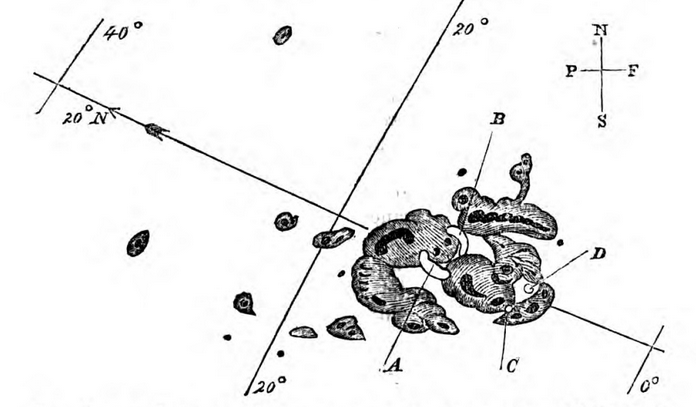
Carrington’s drawing of the solar flare of Sept. 1, 1859. The dots labeled A and B represent the starting positions of the white spots he observed, and the dots labeled C and D represent the ending positions. Dark patches represent sun spots. Photo: Monthly Notices of the Royal Astronomical Society
Astonished at what they had witnessed, Carrington and Hodgson both wrote to the Monthly Notices of the Royal Astronomical Society. They didn’t know it, but they had just observed the solar flare that triggered the most energetic coronal mass ejection in history — a show-stopping solar storm that had lit up the heavens with the aurora. Now that coronal mass ejection, a glob of energized particles, was traveling toward the Earth at breakneck speed.
On Sept. 2, it hit the Earth.
The living telegraph
By 1859, 200,000 kilometers of telegraph lines covered the surface of the Earth. Governing everything from supply chains to military decisions to familial correspondence, the telegraph system held together a rapidly globalizing world. When the coronal mass ejection hit and triggered another powerful auroral storm, operators struggled to hold the system together.
Before, the electrified air had interfered with the current produced by the telegraphs’ batteries, preventing operators from transmitting. Now telegraphs could send messages — but not using their own power.
Please cut off your battery entirely from the line for fifteen minutes, an operator in Boston transmitted to his colleague in Maine.
Will do so. It is now disconnected.
The Boston operator disconnected his battery as well. Now the only current powering his telegraph was flowing through the air because of the geomagnetic storm.
How do you receive my writing?
Better than with our batteries on, replied the Maine operator.
Faced with such a strong variable current, many other operators abandoned their batteries in favor of this natural source of power. But it wasn’t merely odd, it was dangerous. An operator in New York, struggling with the telegraph’s electromagnet, accidentally walked into a wire grounding the system. A spark crackled between his forehead and the wire, and he reeled from the electric shock.
In the 1850s, workers had to be prosaic. The operator, figuratively and literally stunned, worked through the rest of his shift.
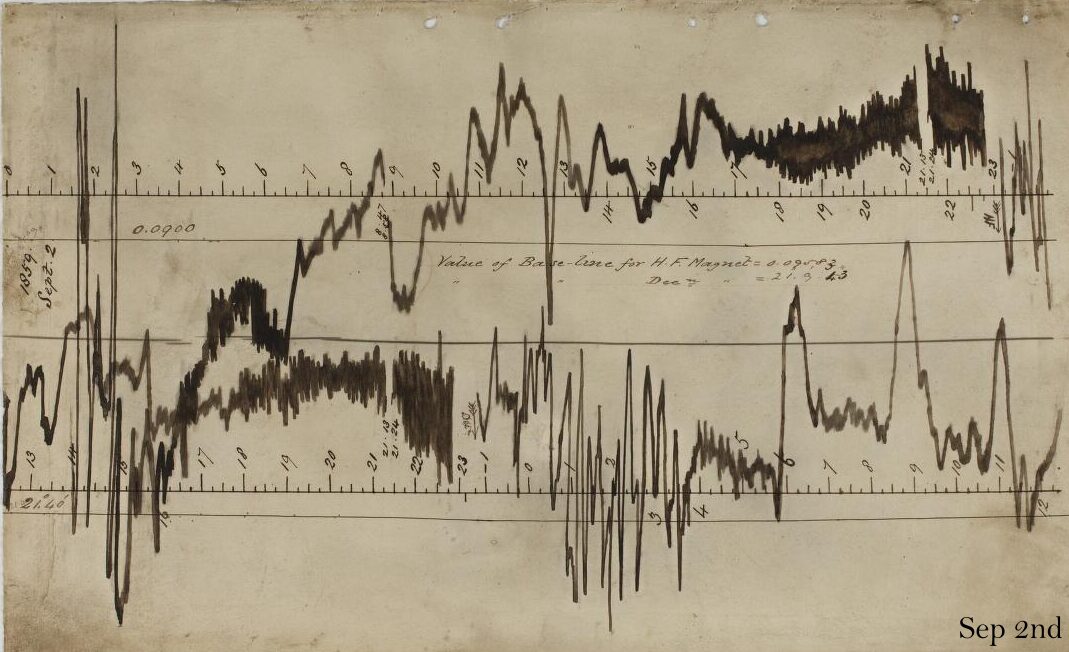
Horizontal force and declination of the geomagnetic storm on Sept. 2, 1859. Photo: British Geological Survey
What is a solar storm?

A coronal mass ejection. Photo: NASA/ESA
The Sun doesn’t rotate like the Earth. Instead of a static surface, where every point completes a rotation in the same amount of time, different parts of the surface revolve at different angular speeds. The material in the outer layers of the Sun (the parts emitting the light we see) constantly seethes, bubbles, and tears apart as magnetic field lines contort around each other. When energy builds up sufficiently high in the charged plasma, the magnetic field lines snap into a new configuration. The stored energy explodes with forces equaling billions of hydrogen bombs.
Solar storms are bad news if the coronal mass ejections they produce hit sensitive electrical equipment because they carry charged particles with erratic electric and magnetic fields. But there are a lot of directions for coronal mass ejections to travel other than toward the Earth. Most of the time, we’re safe.
Near misses
Humans have been lucky. The solar flare of 1859, now known as the Carrington Event, hit when tamed electricity was in its infancy. Still, a NASA study estimated that losses totaled a minimum of 10 million of today’s dollars. The only modern coronal mass ejection to match the power of the Carrington Event, in 2012, missed the Earth by nine days.
The closest we’ve come to a modern equivalent was in 1972 when a series of flares followed by a high-speed coronal mass ejection hit the Earth. Shockwaves knocked some satellites out of the Earth’s magnetic field, which shields them from the most destructive of interplanetary particles.
One satellite suffered two years of deterioration in two days. Another recorded lights in the Antarctic that did not exist. At least one U.S. military satellite lost all power and never returned to life.
On the surface of the Earth, areas exposed to the Sun lost signal in the crucial high-frequency radio bandwidths that transmit communications. A series of geological features and pure happenstance protected most of North America from electrical blackouts, but areas of the Midwest lost power.
Disturbingly, the solar storm triggered at least a dozen U.S. mines placed in the waters around Hon La, an island off the southern coast of Vietnam. Through sheer luck, no one was injured.

Underwater mines exploded off the coast of Vietnam during Operation End Sweep, when the U.S. Navy removed the mines. Photo: U.S. Navy
The Y2K of space physics
Y2K, a prophesied breakdown in computing technology because of clocks switching from the second to the third millennium in the year 2000, had one blessing: a countdown. Solar storms are less predictable.
Solar activity flows on an 11-year cycle with minima and maxima. We can guess when the most energetic events might occur, but we lack the concrete knowledge that most effectively drives government disaster funding. Unlike other threats from outer space such as massive asteroids, we don’t even know the full effects of a severe solar storm.
What we do know is that a particularly violent solar storm would impair or even dismantle GPS satellites. This would cause positioning errors that might be inconvenient to a driver on a back road but potentially deadly for airplanes or military technology. Blackouts could roll across Sun-facing regions, dismantling key infrastructure and forcing a reliance on generators. Radio communications might be unusable for days.
Studies on the societal consequences of such an event are minimal. We can look to the past for hints, but global dependence on electromagnetic technologies has increased exponentially since the 1972 storm.
Unlike many natural disasters, solar storms pose the greatest threat to highly developed regions with substantial infrastructure. This 2016 composite map of the Earth’s night lights shows regions of high electrical activity, those that would be most affected by a solar storm.
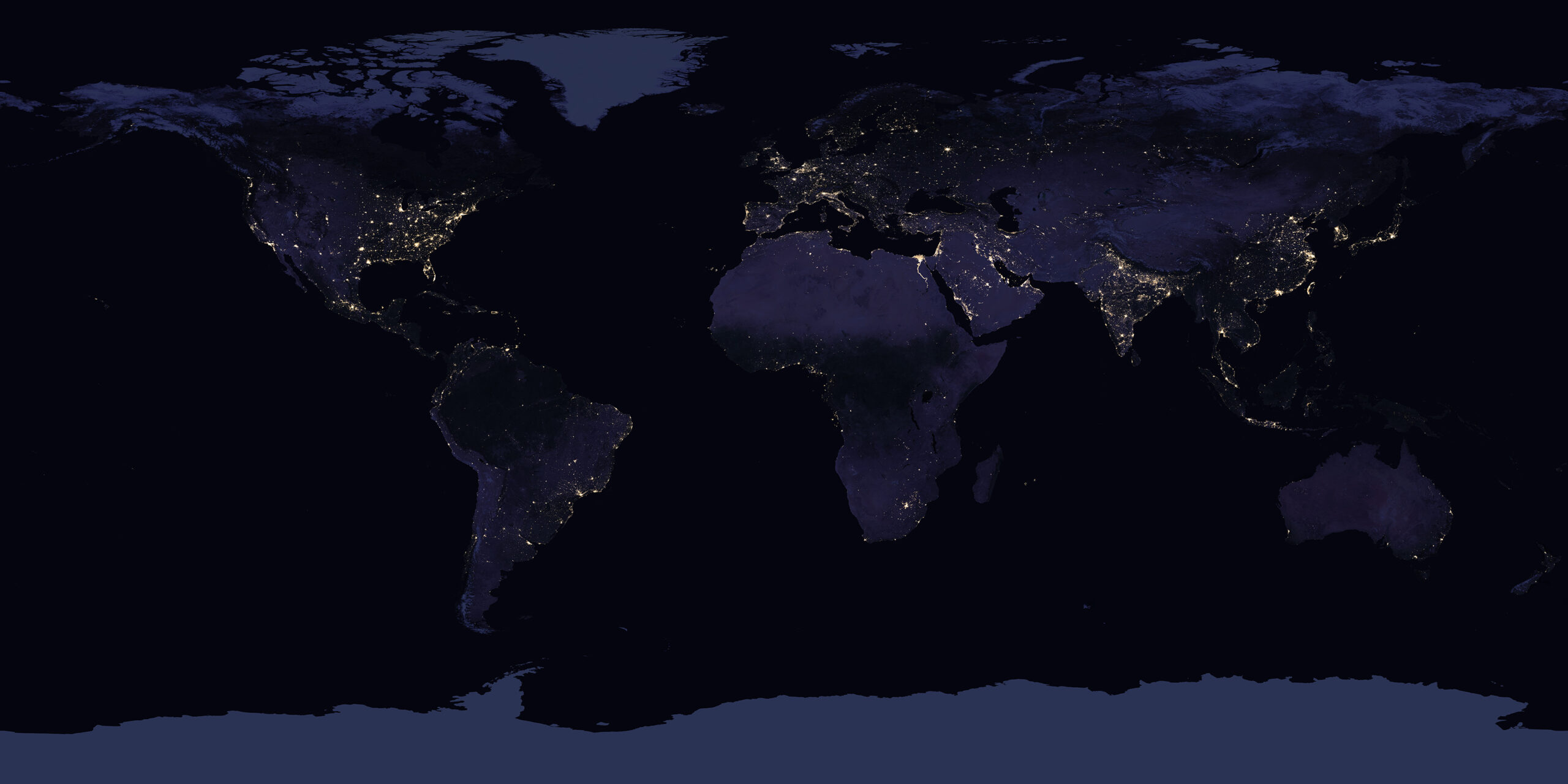
2016 composite map of the Earth’s night lights. Photo: NASA/EO
The solar flare at the end of the tunnel
Despite the unpredictability of space weather and its effects, scientists and disaster mitigation officials are doing what they can to prepare. Emerging technologies such as Artificial Intelligence offer improved forecasting of solar storms. The U.S. National Air and Space Administration has worked with the Department of Homeland Security’s Critical Infrastructure department to develop protocols for mitigating solar storm damage.
As for the everyday person? The National Oceanic and Atmospheric Administration recommends packing an emergency bag for solar storms just the way one would for a hurricane or tornado.
It’s just weather, after all.






